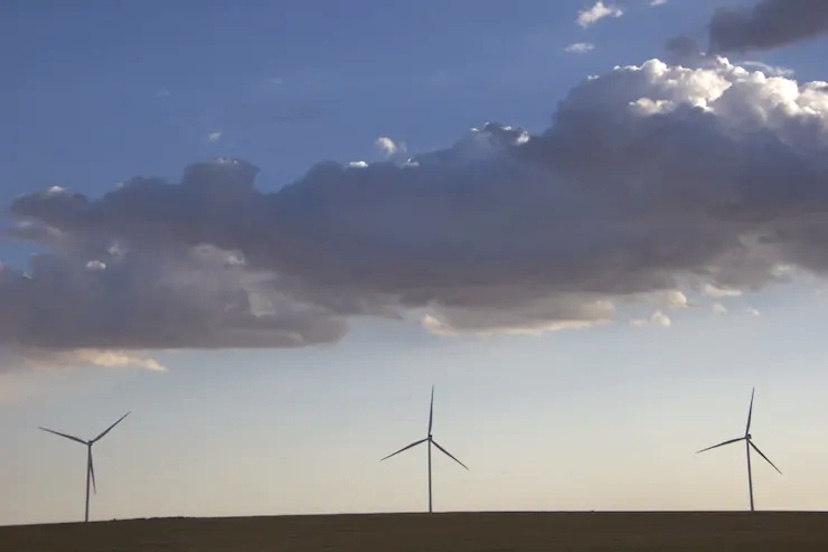Photo: A trio of turbines generate electricity on Colorado’s eastern plains. Photo/Allen Best.
This story originally appeared on BigPivots.com on September 25, 2024.
Vestas, the wind company, has probably finished the expansion of its nacelle factory at Brighton and definitely has finished its blade factory at Windsor, part of a $40 million investment in its production capacity in Colorado.
The expansions were motivated by needs associated with a new product called V163-4.5 MW.
Vestas describes it as ‘a turning point’ in the company’s journey, because it can better harness power of the wind.
The factory in Windsor has 660,000 square feet of space; the Brighton nacelles plant contains 265,000 square feet.
This new iteration of technology introduced requires longer blades. The blades are 264 feet long, just shy of the length of a football field. A typical wind turbine blade is 177 feet.
Blades can be transported by rail or by truck. With that much length, obviously there’s much to think about.
A Union Pacific train with 72 cars in March began ferrying the newer, longer turbine blades from the Windsor factory on a seven-day journey to the Port of Brownsville in Texas, along the Gulf Coast.
A Vestas spokesperson reports the company has orders for 5.4 gigawatts of the new ‘V163’ 4.5 megawatt turbines from across the United States. He did not confirm if the expansion at Brighton is complete, but his remarks suggested that it is. He said the plant is hiring people for both day and night shifts for various functions.
Vestas disclosed earlier this year that it received an order for 242 of the new iterations of wind blades and nacelles for use at the SunZia wind facility in New Mexico and Arizona. That wind farm will also use turbines from GE Vernova. It will have a capacity of 3,515 megawatts.
The turbine used in the new product has a larger swept area, or the area enclosed within a circle created by the whirling blades. That, combined with a larger rotor-size-to-rating ratio, enables the new product to capture energy from the wind more efficiently at lower wind speeds.
This capability increases the capacity factor and reduces variability in production. That creates a more reliable electricity product and hence a more attractive business case.
By offering this more stable power output at low to medium wind speeds, the new V1163-45 MW can be used in more areas.
Vestas, the world’s largest manufacturer of wind products, has invested more than $1 billion in Colorado since its arrival in 2007.
The Denmark-based company has operations across much of the world but has had widely publicized problems. Because of supply chain constraints and rising prices, Vestas lost $1 billion in 2022.
Allen Best publishes the e-journal Big Pivots, which chronicles the energy transition in Colorado and beyond.

